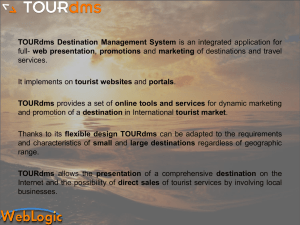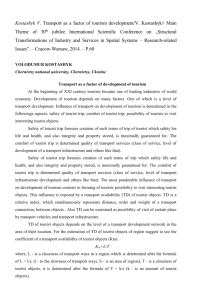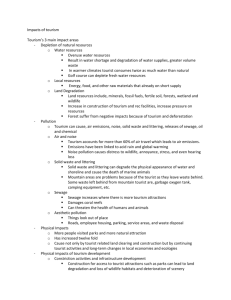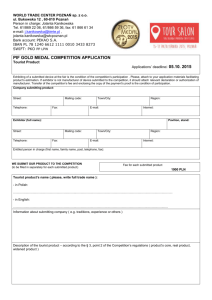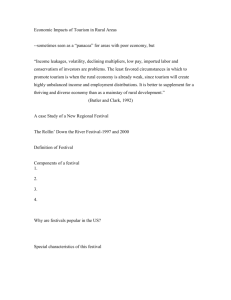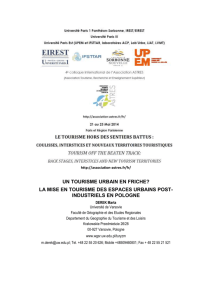The Socio-cultural impacts of tourism
advertisement
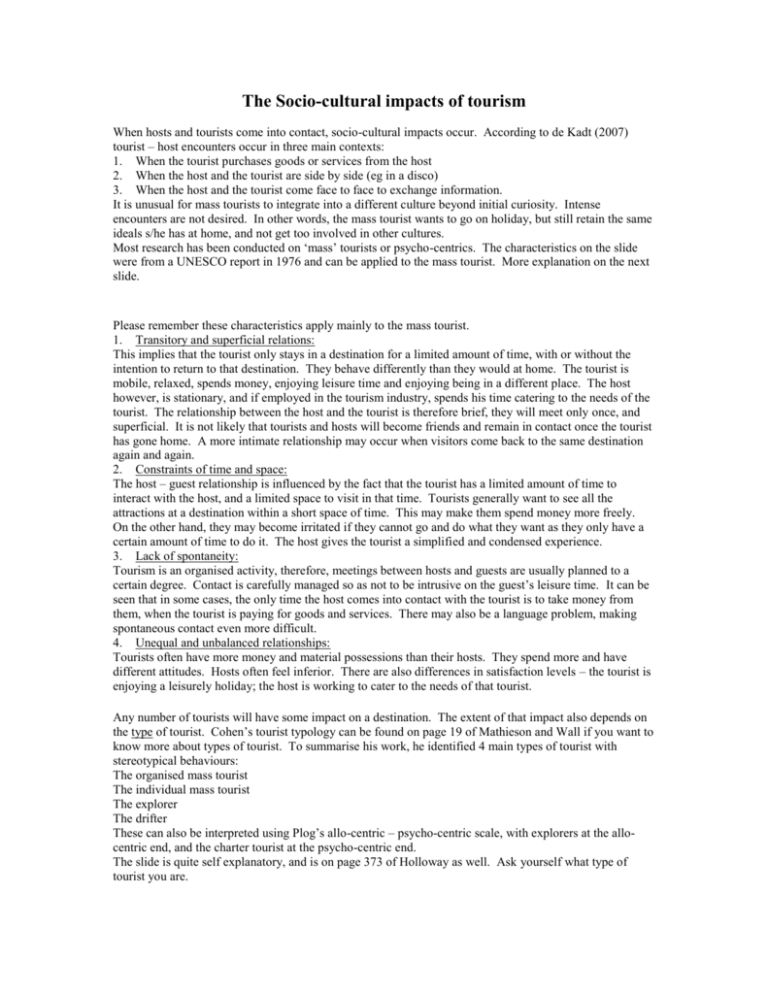
The Socio-cultural impacts of tourism When hosts and tourists come into contact, socio-cultural impacts occur. According to de Kadt (2007) tourist – host encounters occur in three main contexts: 1. When the tourist purchases goods or services from the host 2. When the host and the tourist are side by side (eg in a disco) 3. When the host and the tourist come face to face to exchange information. It is unusual for mass tourists to integrate into a different culture beyond initial curiosity. Intense encounters are not desired. In other words, the mass tourist wants to go on holiday, but still retain the same ideals s/he has at home, and not get too involved in other cultures. Most research has been conducted on ‘mass’ tourists or psycho-centrics. The characteristics on the slide were from a UNESCO report in 1976 and can be applied to the mass tourist. More explanation on the next slide. Please remember these characteristics apply mainly to the mass tourist. 1. Transitory and superficial relations: This implies that the tourist only stays in a destination for a limited amount of time, with or without the intention to return to that destination. They behave differently than they would at home. The tourist is mobile, relaxed, spends money, enjoying leisure time and enjoying being in a different place. The host however, is stationary, and if employed in the tourism industry, spends his time catering to the needs of the tourist. The relationship between the host and the tourist is therefore brief, they will meet only once, and superficial. It is not likely that tourists and hosts will become friends and remain in contact once the tourist has gone home. A more intimate relationship may occur when visitors come back to the same destination again and again. 2. Constraints of time and space: The host – guest relationship is influenced by the fact that the tourist has a limited amount of time to interact with the host, and a limited space to visit in that time. Tourists generally want to see all the attractions at a destination within a short space of time. This may make them spend money more freely. On the other hand, they may become irritated if they cannot go and do what they want as they only have a certain amount of time to do it. The host gives the tourist a simplified and condensed experience. 3. Lack of spontaneity: Tourism is an organised activity, therefore, meetings between hosts and guests are usually planned to a certain degree. Contact is carefully managed so as not to be intrusive on the guest’s leisure time. It can be seen that in some cases, the only time the host comes into contact with the tourist is to take money from them, when the tourist is paying for goods and services. There may also be a language problem, making spontaneous contact even more difficult. 4. Unequal and unbalanced relationships: Tourists often have more money and material possessions than their hosts. They spend more and have different attitudes. Hosts often feel inferior. There are also differences in satisfaction levels – the tourist is enjoying a leisurely holiday; the host is working to cater to the needs of that tourist. Any number of tourists will have some impact on a destination. The extent of that impact also depends on the type of tourist. Cohen’s tourist typology can be found on page 19 of Mathieson and Wall if you want to know more about types of tourist. To summarise his work, he identified 4 main types of tourist with stereotypical behaviours: The organised mass tourist The individual mass tourist The explorer The drifter These can also be interpreted using Plog’s allo-centric – psycho-centric scale, with explorers at the allocentric end, and the charter tourist at the psycho-centric end. The slide is quite self explanatory, and is on page 373 of Holloway as well. Ask yourself what type of tourist you are.

